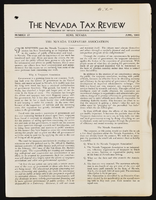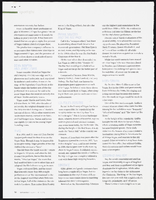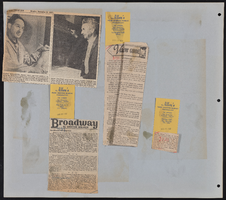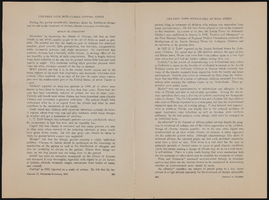Search the Special Collections and Archives Portal
Search Results
Arthur Marshall oral history interview
Identifier
Abstract
Oral history interview with Arthur Marshall conducted by Claytee D. White on February 11, 2014 for the Boyer Early Las Vegas Oral History Project. In this interview Arthur Marshall discusses meeting his wife Jayn, moving to Las Vegas, Nevada, and running a clothing store with his brother-in-law. He also discusses serving as President of Temple Beth Sholom, being instrumental in the formation of the Anti-Defamation League, being a member of the American Israel Public Affairs Committee, and spending twelve years on the Nevada Gaming Commission.
Archival Collection
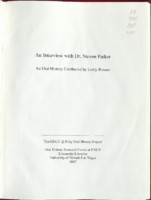
Transcript of interview with Dr. Steven Parker by Emily Powers, December 19, 2006
Date
Archival Collection
Description
Text
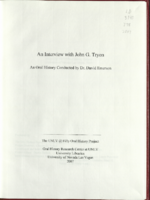
Transcript of interview with John G. Tryon by Dr. David Emerson, February 21, 2006
Date
Archival Collection
Description
Text
Noyes, Billie Mott, 1914-2014
https://www.legacy.com/us/obituaries/lvrj/name/wilma-noyes-obituary?id=19446520
Person

Transcript of interview with Dorothy Pitzer by Judy Harrell, May 19, 2014
Date
Archival Collection
Description
Born in Chicago and raised in small Illinois towns, Dorothy Karper met her future husband, Doug Pitzer, when they went to rival high schools. She began nurses’ training in Dixon, Illinois, and immediately after her 1950 graduation, Dorothy and Doug married. Although he never had to go overseas, the Korean War interrupted their married life, and Doug enlisted in the Air Force and went to basic training in Texas. The couple arrived in Las Vegas in July 1954, when Doug was transferred to Nellis Air Force Base. Dorothy worked as a nurse at Las Vegas Hospital and Clinic 1954-1957 and later worked for a private obstetrics practice. From 1954 until Doug’s discharge in 1957 the Pitzers lived in Kelso-Turner Terrace military housing. In 1956 they purchased a new house in Twin Lakes, but they didn't move in until 1957, after the streets were put in. They remained in their Twin Lakes house until they moved into Dorothy’s present house on Burton Avenue, between West Charleston Boulevard
Text

